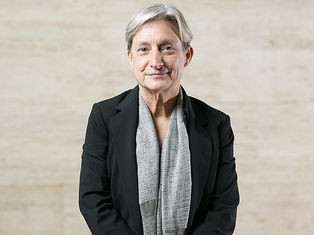top of page
Articles


‘Fair and Responsible’ Re-Presentation of Early Ethnographic Photography
Introduction Recent scholarship on early photography examines the photograph as primary source material in order to identify and explore ‘veins of influence’ that operate on, through, and from it. The ‘veins of influence’ analysis developed in that research brings us, whether as professional creatives, academics, or other participants, into dialogue with the photograph. Through such engagement, we become active participants in and agents of influence, shaping how these earl

Shalini Ganendra
22 min read


The Origins of Art: ‘Sentio ergo sum’
Art has been part of our being for millions of years—possibly even before the beginning of our genus Homo—without being understood as what we now call art. From the beginning, it was simply another way of knowing, probably our first, of coping with what confronted us in our environment as a necessary way of surviving in it and sharing that knowledge with others. It sprang from an emotional reaction to what existed outside of us and how we translated that feeling to pass it on

Don Foresta
30 min read


Ukrainian Cultural Heritage: A Victim of Russian Aggression
As a result of systematic attacks by the Russian armed forces on Ukrainian cities, civilians are killed and injured, and civilian objects are destroyed. Amidst these attacks, museums and architectural monuments protect valuable objects. The destruction and expropriation of Ukraine’s cultural property by the Russian aggressor is striking in its scope. These actions have reached such an extent that we can consider it the destruction of Ukraine’s cultural heritage. At the openin


Afrodescendants Claim Rights to Benin Bronzes—They Belong to All of Us
We are the Restitution Study Group (RSG), a New York-based non-profit founded in 2000 to campaign for innovative approaches to healing...

Deadria Farmer-Paellmann et al
8 min read


Ukrainian Heritage Held Hostage: Crimean Gold’s Long Way Home
I. Introduction 2014 was the beginning of a turbulent but crucial journey for the Ukrainian identity to gain a foothold. In February of...

Leila Kazimi
18 min read


Art under Siege: In Conversation with Mykhailo Glubokyi
Three Stories of Art and War II коли гуркочуть гармати- музи замовкають The Russian invasion catapulted the Ukrainian art world into crisis, and desperate measures were undertaken to secure staff, collections, and artists. Dreams are deferred but stubborn resilience manifests as a desire to not only protect cultural heritage, but also somehow provide opportunities for continued creativity. Three institutions from all regions of Ukraine—Central, East, and West—reflect on their

Constance Uzwyshyn
10 min read


Art at the Arsenal: In Conversation with Olesya Ostrovska-Liuta
Three Stories of Art and War I коли гуркочуть гармати- музи замовкають The Russian invasion catapulted the Ukrainian art world into...

Constance Uzwyshyn
16 min read


Power and Performativity: In Conversation with Professor Judith Butler
A front-runner in the fight for equality and justice, Professor Judith Butler is one of the most influential philosophers of the past...

Teresa Turkheimer
26 min read


Building the Jam Factory: In Conversation with Bozhena Pelenska
Three Stories of Art and War III коли гуркочуть гармати- музи замовкають The Russian invasion catapulted the Ukrainian art world into crisis, and desperate measures were undertaken to secure staff, collections, and artists. Dreams are deferred but stubborn resilience manifests as a desire to not only protect cultural heritage, but also somehow provide opportunities for continued creativity. Three institutions from all regions of Ukraine—Central, East, and West—reflect on thei

Constance Uzwyshyn
9 min read


The Task of the Curator in the Era of Reconciliation
Acknowledgements I would like to begin by acknowledging that the land within which I wrote this research paper is Mi’Kma’ki, the...

Caroline DeFrias
36 min read


Notes on Counter-Archives: ‘Recovering’ Queer Memory in Contemporary Art
Introduction In Zoe Leonard’s photograph of Fae Richards and June Walker, two women wrap their arms around each other and gaze lovingly...
Sophia Dime
36 min read


The Art Industry in Ukraine During the War
The article examines the current state of the Ukrainian contemporary art market in the aftermath of Russia’s invasion of Ukraine and the...

Gallery Portal 11
38 min read


Private Collectors and the Public Institution: In Conversation with Philip Hoffman
Philip Hoffman is Founder and CEO of the Fine Art Group, which focusses on art advisory, investment, and philanthropy. At 33 he became the youngest member of KPMG’s Management Board and later served as its Deputy CEO of Europe. He also worked for Christie’s for 12 years. He regularly comments on the art market in the international press. The Frick Collection is widely regarded as one of New York’s finest galleries. From the interiors of Vermeer to the forests of Fragonard, an
Ollie Gerlach
7 min read


Shaping Taste in Changing Times at the Royal Academy: In Conversation with Rebecca Salter
Rebecca Salter is a painter. She is President of the Royal Academy of Arts, the first woman in the role. She has a strong interest in...

Lily-Rose Morris-Zumin
10 min read


Of Monuments
On 9 April 2003, in the immediate aftermath of the fall of Baghdad, in the first month of the invasion of Iraq, a crowd assembled in Baghdad’s Firdos square and tore down a statue of Saddam Hussein. The event was publicized widely, celebrated by many as an authentic expression of popular revolt against tyranny. Soon, however, it became embroiled in controversy as evidence emerged that the event (ultimately accomplished by American soldiers and equipment) was stage-managed by

Jeremy Strick
8 min read


Art in Exile at Home: The National Palace Museum, Taiwanese Identity, and China’s Imperial Collection
Between December 1949 and February 1950, three shipments, carrying a total of 3,824 crates of artefacts and artworks from the Qing...

Jean-Michaël Maugüé
11 min read


Beyond Repatriation: The Need for Sensitive Museum Display of Indigenous Objects
Many significant cultural objects have found uncomfortable homes in museums across the world.[1] They have been trapped behind glass,...

Piper Whitehead
13 min read


Rouen Address
This is the text of the Introductory Address read at the conference on temporary exhibitions held at the Musée des Beaux-Arts de Rouen on...

Sir Nicholas Penny
9 min read


Politicising the Apolitical: Abstract Expressionism and the Cold War
Abstract Expressionism emerged amid a tense post-war climate, as a new genre of art that seemed so devoid of representational form or meaning that it could not be political. However, it was precisely this apparent apoliticality that made it so intensely political. Historiography on the topic has followed what I am inclined to call a ‘top-down’ trend. As outlined by Eva Cockcroft and Frances Stonor Saunders, those in power consciously used the art of the Abstract Expressionist

Mina Polo
10 min read


Revitalising the Royal Academy: In Conversation with Sir Christopher Le Brun
Born in Portsmouth in 1951, Sir Christopher Le Brun is a painter, printmaker, and sculptor. As President of the Royal Academy 2011-19, he...

Alexander (Sami) Kardos-Nyheim
7 min read


In the Wake of Colston: Wake Work after Woke Work
What does it mean to defend the dead? To tend to the Black dead and dying: to tend to the Black person, to Black people, always living in the push toward our death? It means work. It is work: hard emotional, physical, and intellectual work that demands vigilant attendance to the needs of the dying, to ease their way, and also to the needs of the living. —Christina Sharpe[1] A world divided into compartments, a motionless, Manicheistic world, a world of statues: the statue o

Jacob Badcock and Jovan Owusu-Nepaul
19 min read


Directing the Design Biennale: In Conversation with Victoria Broackes
Victoria Broackes is Director of the 2021 London Design Biennale. Previously she worked for the Victoria and Albert Museum (V&A): as...

Joseph Court
11 min read


Geopolitics and Innovation at Louvre Abu Dhabi: In Conversation with Manuel Rabaté and Dr Souraya Noujaim
Manuel Rabaté is Director of Louvre Abu Dhabi. He has taught Arts & Cultural Management at Paris-Dauphine University and Paris-Sorbonne University Abu Dhabi. He is a Knight of France’s National Order of Merit. Dr Souraya Noujaim is Scientific, Curatorial & Collections Management Director of Louvre Abu Dhabi. She has studied the British Museum’s Arabic weights and measures, and has been Islamic Art History Chair at the École du Louvre. Louvre Abu Dhabi sits at a tense but

Alexander (Sami) Kardos-Nyheim
8 min read


The Future of the Museum of London: In Conversation with Sharon Ament
Sharon Ament is the Director of the Museum of London, and inspiring passion in the capital and its museum is her goal. Sharon joined the...

Joseph Court
10 min read
bottom of page


